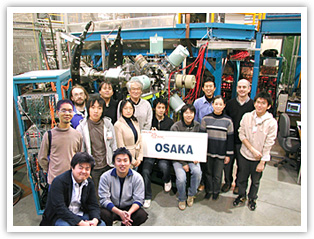A nucleus, a many-body system of protons and neutrons governed by the strong interaction, exhibits various types of structure such as shell structure, collective structure, cluster structure, and so on. Recent accelerator and experimental techniques enabled us to investigate nuclei under extreme conditions. Novel structures, which are not explained well by conventional nuclear models, have been revealed. We are concentrating on the following two extremes. 1) One is the structure of very unstable nuclei with a large excess of proton number to that of neutron, or vice versa: Our unique methods utilizing lasers to control the spin orientation of unstable nuclei and/or atoms are successful in measurements with high sensitivity and high precision for nuclei far from the stability line. We have performed a series of experiments at TRIUMF in Canada and at RIBF in RIKEN. 2) The other is the structure of high-spin isomers with extraordinary long lifetimes: We use a highly sensitive system consisting of an in-flight beam separator for fusion products, particle detectors with large solid angle and Ge-detector array for gamma-ray detection. We are searching for new isomers as clues to yet undiscovered exotic deformed states. The experiments are performed at RCNP, Osaka Univ. and being prepared at RIBF in RIKEN.

Group photo in front of the detector system at TRIUMF, Canada.







